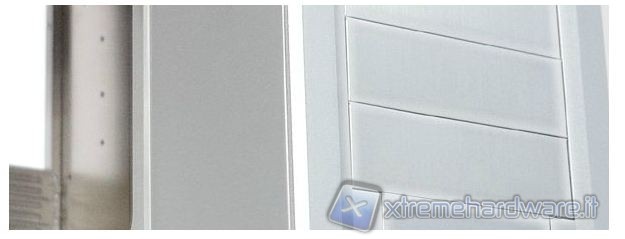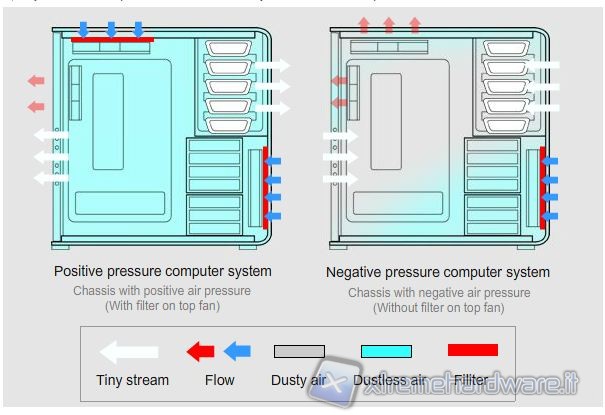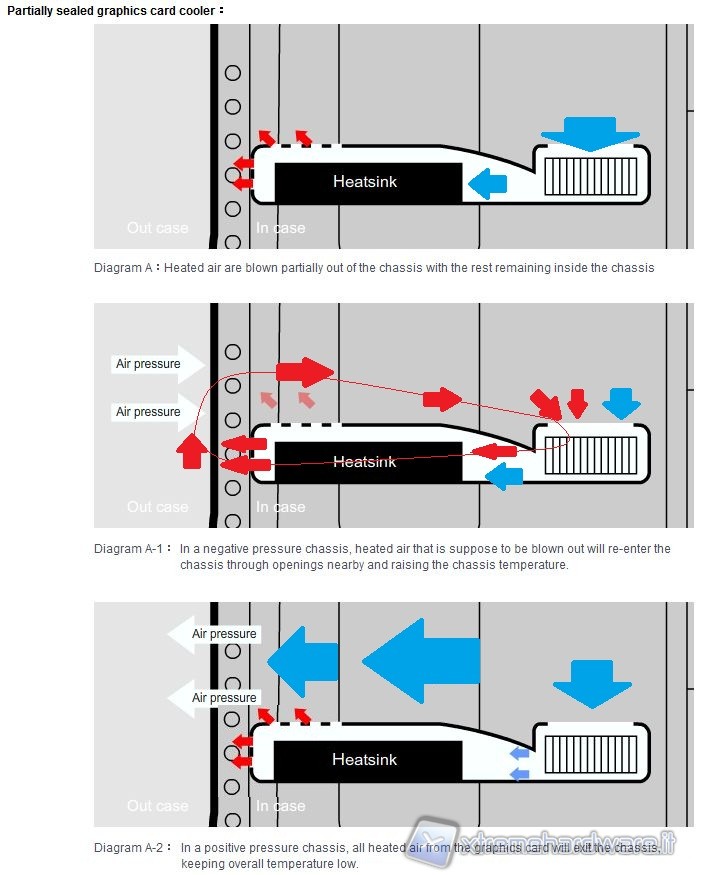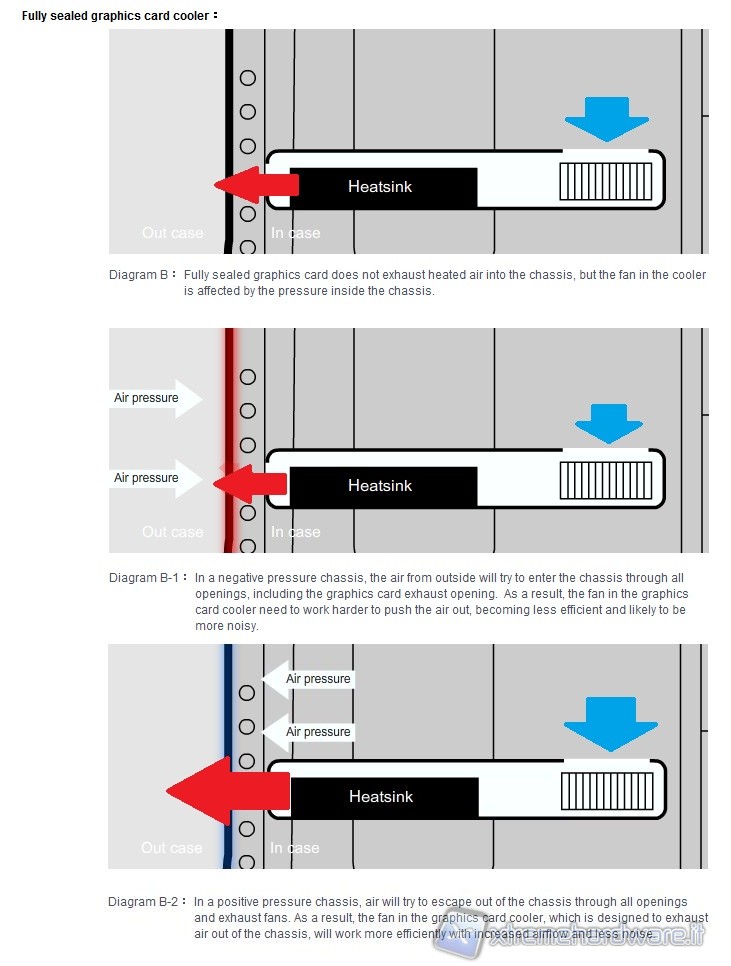 Today we inaugurate a series of articles about the famous SilverStone brand, starting with an analysis of its proprietary cooling solutions. Furthermore, we will present a series of cabinets each having different features, hence oriented to different user groups; we’ll also present during the analysis several interesting products, always of the same brand.
Today we inaugurate a series of articles about the famous SilverStone brand, starting with an analysis of its proprietary cooling solutions. Furthermore, we will present a series of cabinets each having different features, hence oriented to different user groups; we’ll also present during the analysis several interesting products, always of the same brand.
Pubblicità
Know-How Silverstone : positive pressure and stack effect
What is meant by positive and negative pressure inside a cabinet?
http://www.youtube.com/watch?v=douRh490E3I&list=UUig-yfqTR5tHwdxuxpmPK7w&feature=plcp
http://www.youtube.com/watch?v=q1Xgjvf0SDc&list=UUig-yfqTR5tHwdxuxpmPK7w&feature=plcp
http://www.youtube.com/watch?v=DLOg9yI3rjs&list=UUig-yfqTR5tHwdxuxpmPK7w&feature=plcp
http://www.youtube.com/watch?v=Qe-2ZqmSGug&list=UUig-yfqTR5tHwdxuxpmPK7w&feature=plcp
http://www.youtube.com/watch?v=VsmKHJq2aTs&list=UUig-yfqTR5tHwdxuxpmPK7w&feature=plcp
How do the positive and negative pressure influence the air flow in a cabinet? The main difference between positive and negative pressure is the way they affect vents and other ventilation slots of the chassis. This picture shows an example of a modern high-performance case, with additional air intakes that aren’t occupied by the cabinet fans. These openings can work either as exhaust or intake depending on whether the cabinet has a positive or negative air pressure, respectively.
The ventilation grilles are not the only place in the chassis that can be affected by the dynamics of incoming and outgoing flows: also fissures, shown in this photo, may be called into question. This is a first benefit from positive air pressure: dust removal. New models of cases usually include filters to avoid accumulation of dust inside the cabinet. If the case has a positive pressure, only the dedicated intake fans will require filters to reduce the total quantity of dust.
The diagram shows clearly that the cabinet with a positive pressure can prevent the accumulation of dust, thanks to dedicated filters placed in front of fans, which push the air out through openings where there are no appropriate filters. The idea is to use positive air pressure to build dust-proof cabinets, similar to the concept of cleanrooms, where filtered air pumped in with positive pressure helps keeping out the dust from the room. These rooms are used in fields like Hi-tech, medical and food processing systems, to prevent contamination or dust. Regardless of their size and their level, they are built to maintain a positive air pressure to remove dust.
The other benefit of positive air pressure is maximizing the efficiency of the heat sink video card.
Left, partially closed cooler - Right, totally closed cooler
Generally all the video cards are studied to exhaust hot air outside of the case, to limit the reintroduction of hot air inside the cabinet itself.
Partially closed cooler:
Totally closed cooler:
Taken from: http://www.silverstonetek.com/techtalk_cont.php?area=usa&tid=wh_positive
We also thank SilverStone for providing materials and pamphlets.








